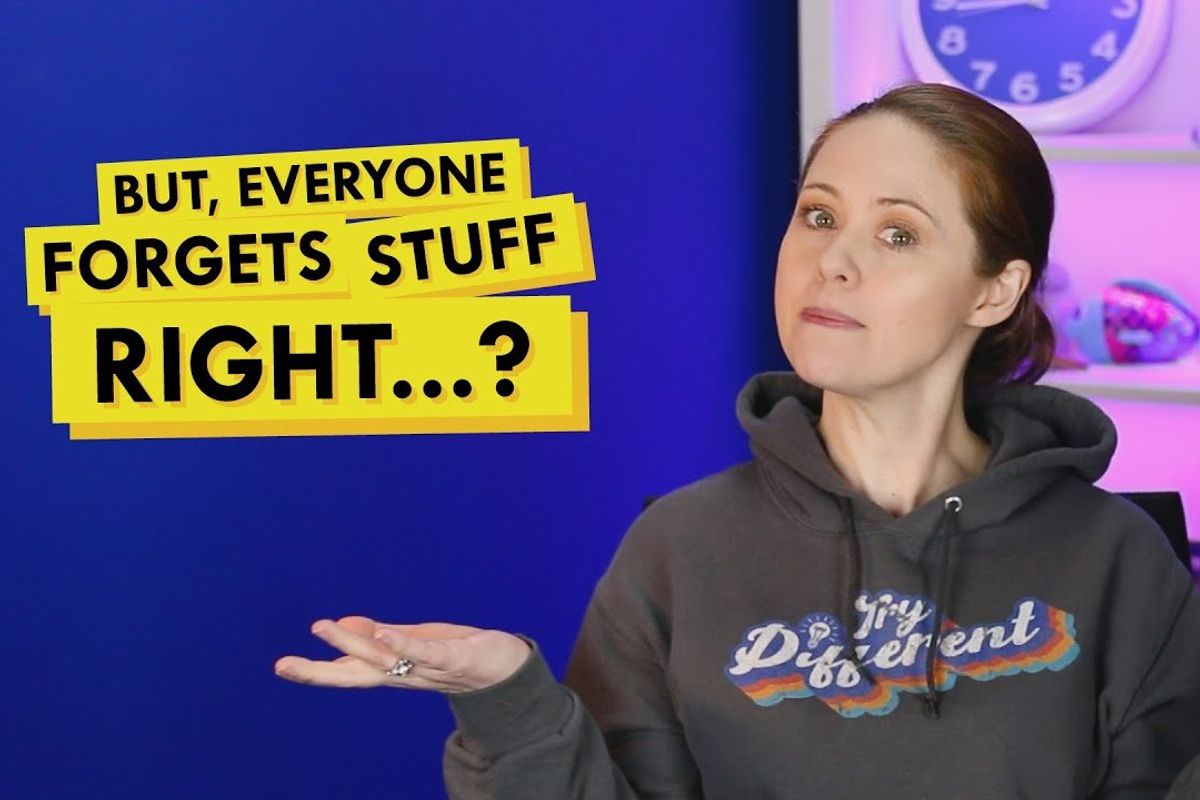Creator behind 'How to ADHD' explains why people with ADHD struggle with memory and how to help
People with ADHD aren't forgetful on purpose. There's actually a reason their brains don't always hold onto things.

Why people with ADHD struggle to remember things
There's nothing more annoying than walking into a room and completely forgetting why you went in there in the first place. Well, maybe having a friend that constantly forgets your plans or forgets to text you back...that might be more annoying. But memory lapses are a pretty common symptom of ADHD, and believe me—your resident card-carrying ADHDer—it's friggin' frustrating. Especially when you want nothing more than to remember whatever the thing was that you forgot.
Since it's frustrating to us, we are hyperaware that it's frustrating to those around us when we constantly forget. That's why when Jessica McCabe, the creator behind "How to ADHD," put out an explainer on why people with ADHD struggle with memory, I sat down and paid attention. (Well, listened to the highlights. I do have ADHD after all.)
Turns out, people with ADHD struggle to remember things because that's the job of our working memory, and (surprise) working memory is severely impacted by ADHD.
But what is working memory? According to VeryWell Health, "working memory is the brain's short-term storage space," which allows your brain to hold onto new information like someone's name, a deadline or important details to a conversation for a short period of time.
This temporary storage is there to allow your brain time to decipher the new information and move it to a more permanent location as useful data. Some would argue this is a fairly important function of the brain. It certainly helps make adulting a little easier to navigate...unless you have ADHD. In that case, your brain yeeted that function into the dumpster.
"Ok yeah, I forgot my keys or I forgot to stop and get gas, but everybody forgets stuff, right? This is a universal human experience. Everybody forgets stuff," McCabe explained. "What I didn't know at the time was that that's true, but not everybody forgets things to the extent that those with ADHD do. It doesn't impair their lives on a daily basis in the same way."
Before you fret or completely write off your friends and family who have ADHD, check out McCabe's tips that have helped her supplement her barely existent working memory in the video below.
- Jessica McCabe has ADHD. Her message to her mom is tearful and moving. ›
- Doctor breaks down how to recognize ADHD in adults. The symptoms may be surprising. ›
- What 8 successful ADHDers want you to know about how they get stuff done. ›
- Brain surgeon breaks down secrets behind the ADHD brain - Upworthy ›
- Man's trick for spotting ADHD in women is causing tears - Upworthy ›
- How to revive memories you thought you forgot forever - Upworthy ›
- I want more core memories with my kids. Experts say 6 things will make them last forever. - Upworthy ›

